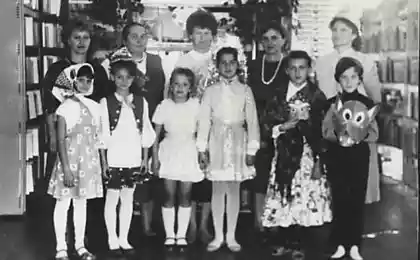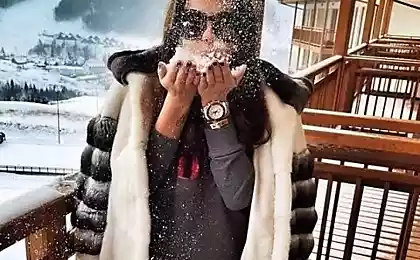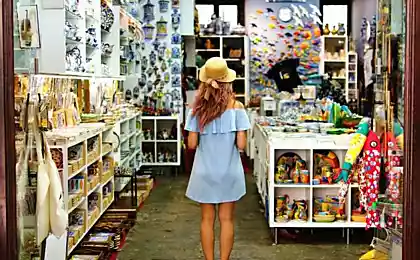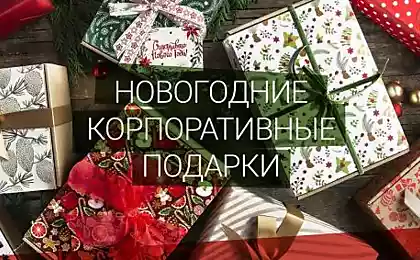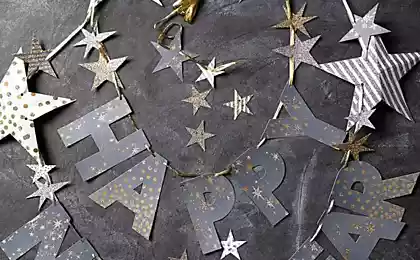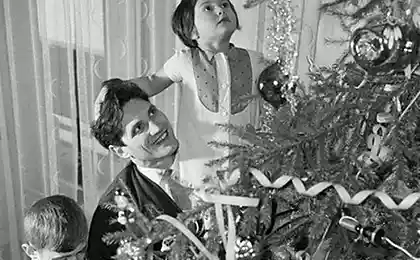605
Traditional New Year gifts
10th: Japanese people can be hurt if to give him a New Year flowers. It is believed that give flowers are entitled to only one member of the imperial family. From a mere mortal Japanese flower will not accept.

9th place: The Chinese, in turn, will take on New Year's Eve watch, because in his mind the timing associated with death.
8th place: married French woman will not agree to take on the outside, even a small bottle of perfume too intimate.
7th place: In Estonia, as well as in Austria and Scotland, brings happiness met on the street with guns chimney sweep craft - high cylinder and weights from a rope with a cleaning brush. Therefore, there is often presented clay chimney, stained with soot. Austria has presented quatrefoil clover and piggy bank. By the way, here it brings gifts to Jesus himself, going round the house on the Golden Horse.
6th place: Swedes traditionally give each other homemade candles. So it happened due to the fact that in winter the Arctic Circle early it gets dark, and the light symbolizes friendship, hospitality, fun. In Swedish homes where there are children, the celebration of the New Year begins with the fact that the Pope come out the garbage, and returned in the image of Julia TomTom (Swedish Santa Claus). When the clock strikes midnight, the Swedes throw streamers, dudyat in pipes and Yul Tomte begins to give gifts.
By the way, in Scandinavia gifts wrapped in elegant paper, carefully sealed with red wax. However, if the gifts are not to be accompanied by poems and sayings with instructions on how to use the gift, it is possible that the Scandinavians will not know what to do with it.
5th place: In Germany, there is a special ceremony of exchanging gifts, Besherung. Previously, it was decided to give the native der Lebekuchen - Christmas gingerbread. In the 16th century, this "miracle of the flour, sugar and raisins" sometimes could reach the whole length of the bench.
4th place: The Greeks, in addition to traditional baskets with champagne and wine in recent times give each other a new deck of cards.
3rd place: Iceland naughty child can easily get from Santa Claus raw potato. All Icelandic children know that Santa Claus can suddenly look to him every day from 1 to 24 December. If something goes wrong ... will have only themselves to blame.
2nd place: Russia gifts for Christmas and New Year gifts prepared with special care. Children tried to please his own parents made watercolor angel or God of hosts, a kindly looking clouds. The adults were given toy houses, in which wonderful porcelain dolls of porcelain drinking cups of real tea.
Especially in Russian families loved to give the book - "sacred history", fairy tales, Russian classics, children's story Chara and books on natural history (Bram).
Gifts usually happened so much (from aunts, uncles, cousins, cousins, grandparents and godparents), which had put a tree next to the special tables.
1st place: The most unexpected gifts can be considered carved ice figures walruses and polar bears, which give each other Eskimos in Greenland. As in Greenland, even in summer cold, as we do on New Year's gifts to the ice kept very, very long time.

9th place: The Chinese, in turn, will take on New Year's Eve watch, because in his mind the timing associated with death.
8th place: married French woman will not agree to take on the outside, even a small bottle of perfume too intimate.
7th place: In Estonia, as well as in Austria and Scotland, brings happiness met on the street with guns chimney sweep craft - high cylinder and weights from a rope with a cleaning brush. Therefore, there is often presented clay chimney, stained with soot. Austria has presented quatrefoil clover and piggy bank. By the way, here it brings gifts to Jesus himself, going round the house on the Golden Horse.
6th place: Swedes traditionally give each other homemade candles. So it happened due to the fact that in winter the Arctic Circle early it gets dark, and the light symbolizes friendship, hospitality, fun. In Swedish homes where there are children, the celebration of the New Year begins with the fact that the Pope come out the garbage, and returned in the image of Julia TomTom (Swedish Santa Claus). When the clock strikes midnight, the Swedes throw streamers, dudyat in pipes and Yul Tomte begins to give gifts.
By the way, in Scandinavia gifts wrapped in elegant paper, carefully sealed with red wax. However, if the gifts are not to be accompanied by poems and sayings with instructions on how to use the gift, it is possible that the Scandinavians will not know what to do with it.
5th place: In Germany, there is a special ceremony of exchanging gifts, Besherung. Previously, it was decided to give the native der Lebekuchen - Christmas gingerbread. In the 16th century, this "miracle of the flour, sugar and raisins" sometimes could reach the whole length of the bench.
4th place: The Greeks, in addition to traditional baskets with champagne and wine in recent times give each other a new deck of cards.
3rd place: Iceland naughty child can easily get from Santa Claus raw potato. All Icelandic children know that Santa Claus can suddenly look to him every day from 1 to 24 December. If something goes wrong ... will have only themselves to blame.
2nd place: Russia gifts for Christmas and New Year gifts prepared with special care. Children tried to please his own parents made watercolor angel or God of hosts, a kindly looking clouds. The adults were given toy houses, in which wonderful porcelain dolls of porcelain drinking cups of real tea.
Especially in Russian families loved to give the book - "sacred history", fairy tales, Russian classics, children's story Chara and books on natural history (Bram).
Gifts usually happened so much (from aunts, uncles, cousins, cousins, grandparents and godparents), which had put a tree next to the special tables.
1st place: The most unexpected gifts can be considered carved ice figures walruses and polar bears, which give each other Eskimos in Greenland. As in Greenland, even in summer cold, as we do on New Year's gifts to the ice kept very, very long time.






